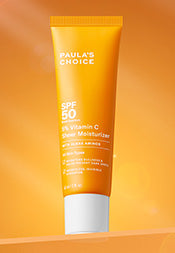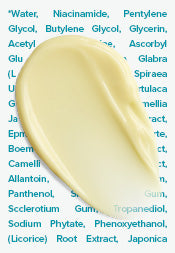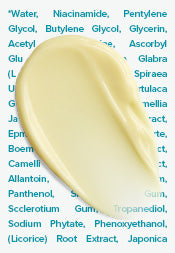Are Essential Oils Good for Skin?
What are essential oils?
Essential oils such as tea tree oil appear on the ingredient lists of many skincare products. However, did you know this group of ingredients can cause irritation and long-term damage to your skin? Fine lines and wrinkles are two possible consequences in this regard.
Essential oils are the volatile essences of plants that create unique, wafting fragrances. They can be extracted from any plant’s flowers, bark, stem, leaves, roots, and sometimes its fruits. No matter the source, these oils are complex mixtures, often containing up to 60 different components — some good for skin, others not so much.
The volatile fragrant portion of plants is what makes essential oil for skin problematic — but these compounds can be beneficial for health, too. This duality makes things confusing for people, because the truth is that although the oils smell wonderful and boast certain medicinal benefits, it is rarely ever good for your skin.
Many companies that sell skincare products which contain essential oils often brag that they’ve been used for aromatherapy for thousands of years. But modern science has revealed the truth about how fragrant oils can cause problems for your skin: What’s ancient isn’t always good! Regrettably, the simple truth in beauty is that essential oils are just not good for your skin.
Can you put essential oils on your skin?
Diluted essential oils are often included in skincare products with claims that they’ll do everything from fighting acne breakouts to fixing fine lines and wrinkles. While you can certainly put diluted essential oils on your skin, the reasons not to are far more compelling than those in favour. The only exception is when using essential oils for aromatherapy, where insignificant amounts are applied in key areas, so inhalation is possible during the aromatherapy process.
Are essential oils bad for the skin?
Some components of essential oils are indeed good for your skin. For example, many of them are rich sources of potent antioxidants like caffeic acid and rosmarinic acid, while others contain antibacterial ingredients that protect against visible skin problems related to fungi, yeast, and other topical troublemakers.
However, overall, essential oils can’t really be said to be good for skin, as most of the aforementioned compounds can also significantly irritate and damage your skin. Some common reactions to essential oils include contact dermatitis, dryness, redness, and itchiness.
Other common irritants found in these oils include fragrance ingredients such as limonene, citronellol, eugenol, and linalool, all of which are present in many fragrant plant oils. The positives just don’t outweigh the negatives.
Some essential oils for acne-prone skin—such as rosemary, lemongrass, thyme, cinnamon, citronella, and tea tree oils—do have research showing their helpfulness, but they also cause significant irritation and haven’t proven to be as effective as the gold-standard active ingredient for acne, benzoyl peroxide (which research shows can even reduce redness!).
In terms of essential oils for ageing skin, none can successfully address the appearance of wrinkles, brown spots, loss of firmness, or the need to exfoliate skin, especially in comparison to the hundreds of beneficial, non-fragrant plant extracts and vitamins that have no risk of causing irritation.
The best essential oils for skin
Unfortunately, as you now know, there isn’t a “best essential oil” that's good for skin. We wish that this wasn’t the case, but to one degree or another, all essential oils pose risks when applied to skin.
There is abundant research showing that certain amounts (such as 0.1%) of these oils are non-irritating, but lots of skincare products contain either more than one essential oil or far more than that 0.1%. Furthermore, many use multiple fragranced skincare products rather than just one, which adds up to a higher risk of irritation than what research has shown is acceptable.
Another important fact to consider: Skin is exceptionally good at hiding when it’s irritated. So, even if you don’t see a reaction, damage can still be occurring beneath your skin’s surface, cumulatively leading to problems you will only notice later, like dryness and fine lines. Irritation is also pro-ageing, the opposite of what most want from skincare.
Fragrant essential oils to avoid
As we mentioned above, using essential oils for skincare is not a good idea because so many of them hurt the skin more than they help. All citrus oils—including lemon, lime, tangerine, grapefruit, mandarin, and bergamot — are a big problem for all skin types. Mint oils such as peppermint, wintergreen, pennyroyal, and balm mint, although cooling, also irritate the skin and result in damage. In a similar vein, avoid camphor oil, which is a potent irritant.
Despite their reputation for being soothing (they are if you inhale them rather than put them on your skin), flower-derived oils like lavender and rose are also problematic. Ironically, both oils contain skin-calming substances, but those are present alongside the problematic fragrant compounds — you can’t get one without the other within these flower-derived plant oils.
To make it easier for you to navigate ingredient labels when shopping for skincare products, we’ve compiled a brief list of other oils to avoid. These show up in a surprising number of formulas, including those that contain essential oils for ageing skin and dry skin:
- Clary sage oil
- Eucalyptus oil
- Geranium oil
- Ginger oil
- Jasmine oil
- Lemongrass oil
- Neroli oil
- Oregano oil
- Patchouli oil
- Rosemary oil
- Sage oil
- Sandalwood oil
- Ylang ylang oil
Is tea tree essential oil good for skin?
Tea tree essential oil has a long history of anecdotal use as a skincare ingredient, especially for treating acne, due to its proposed antibacterial properties. While there is some evidence that tea tree oil can be used this way, as with other essential oils, the result is a mixed bag. We recommend avoiding tea tree essential oil to bypass any irritation it may incur.
What to use instead of essential oils
There are many wonderful, gentle, and proven non-fragrant oils and plant extracts to consider for various skin types and skin concerns. Natural ingredients can be great for skin if you avoid products that also contain natural fragrant ingredients — exactly the approach Paula’s Choice Skincare takes with our products. For example, our OMEGA+ Complex Serum and Moisture Renewal Oil Booster contain non-fragrant, non-irritating formulas loaded with natural ingredients research has shown to be ultimately good for the skin.
There are too many beneficial non-fragrant natural oils and plant extracts to list here — this article would go on for pages if we were to try! Instead, our advice is to avoid any skincare products that contain fragrant plant oils and extracts. Simply shop with your nose (paying attention to the lack of aroma) and double-check the ingredient list for anything fragrant. You can also look to brands like Paula’s Choice Skincare which does the detective work for you through an extensive library of research-backed articles and tips!
In the end, the best essential oils are the ones you don’t use on your skin. Enjoy their aromatherapeutic benefits in other ways, such as from scented candles, sachets, or burning oils in a diffuser. That way, you'll make both your nose and skin happy!
Learn more about skincare ingredients
Shop Paula’s Choice fragrance-free, non irritating skincare best sellers.
References for this information:
Asian Pacific Journal of Tropical Biomedicine, August 2015, pages 601-611
International Journal of Antimicrobial Agents, February 2015, pages 106-110
Essential Oil Safety, Second Edition, Tisserand, R., Young, R., Elsevier Ltd., 2014, pages 69-98
Comprehensive Reviews in Food Science and Food Safety, January 2013, pages 40-53
Food and Chemical Toxicology, February 2008, pages 446-475
Planta Medica, October 2007, pages 1,275-1,280; March 2006, pages 311-316
Journal of Agricultural and Food Chemistry, March 2007, pages 1,737-1,742
Journal of Investigative Dermatology, December 2003, pages 1,317-1,325











